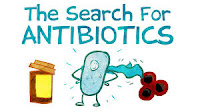 |
| https://medicinesphm.blogspot.com/ |
CIPROFLOXACIN;-
Ciprofloxacin is an Antibiotic used to treat a number of Bacterial infectios . This includes bone and joint infection, intra abdominal infections, certain type of infectious diarrhea, respiratory infection, skin infections, typhoid fever and urinary tract infection among others. For some infections it is used in addition to other antibiotics. It can be taken by mouth or used intravenously.
DRUG CATEGORIES-Quinolone Group;-
 |
| https://medicinesphm.blogspot.com/ |
1.CIPROFLOXACINE
2.LEVOFLOXACIN
3.NOREFLOXACIN
4.ENOXICIN
5.TARVAFLOXACIN
QUINOLON Group
SIDE EFFECT;-
 |
| https://medicinesphm.blogspot.com/ |
Common side effects include nausea, vomiting, diarrhea and rash. Ciprofloxacin increases the risk of tendon rupture and worsening muscle weakness in people with the neurological disorder myasthenia gravis. Rates of side effects appear to be higher than some groups of antibiotics such as cephalosporins but lower than others such as clindamycin. Studies in other animals raise concerns regarding use in pregnancy. No problems were identified, however, in the children of a small number of women who took the medication. It appears to be safe during breastfeeding. It is a second-generation fluoroquinolone with a broad spectrum of activity that usually results in the death of the bacteria.
Rates of side effects appear to be higher than with some groups of antibiotics such as Cephalosporin but lower than with others such as clindamycin. Compared to other antibiotics some studies find a higher rate of side effects while others find no difference.
DISCOVERY;-
 |
| https://medicinesphm.blogspot.com/ |
Medical uses;-
Ciprofloxacin is used to treat a wide variety of infections, including infections of bones and joints, Endocarditis, Gastroentritis, malignant otitis externa, Respiratory tract infection, Cellulitis, urinary tract infection, prostatitis, Anthrax, and Chancroid..Ciprofloxacin only treats bacterial infections; it does not treat viral infections such as the common cold. For certain uses including acute sinusitis, lower respiratory tract infections and uncomplicated gonorrhea, ciprofloxacin are not considered a first-line agent.
Pregnancy;-
 |
| https://medicinesphm.blogspot.com/ |
Fluoroquinolones have been reported as present in a mother's milk and thus passed on to the nursing child. The U.S. FDA recommends that because of the risk of serious adverse reactions (including articular damage) in infants nursing from mothers taking ciprofloxacin, a decision should be made whether to discontinue nursing or discontinue the drug, taking into account the importance of the drug to the mother.
Children;-
Oral and intravenous ciprofloxacin are approved by the FDA, for use in children for only two indications due to the risk of permanent injury to the musculoskeletal system:-Contraindications;-
 |
| https://medicinesphm.blogspot.com/ |
Contraindications include:-
· Taking Tiznidine at the same time· Use by those who are hypersensitive to any member of the quinolone class of antimicrobial agents
Ciprofloxacin is also considered to be contraindicated in children (except for the indications outlined above), in Pregnancy to nursing mothers, and in people with epiplepsy or other seizure disorders.
PREVENTION IZ BETTER THN MEDICINES.



No comments:
Post a Comment